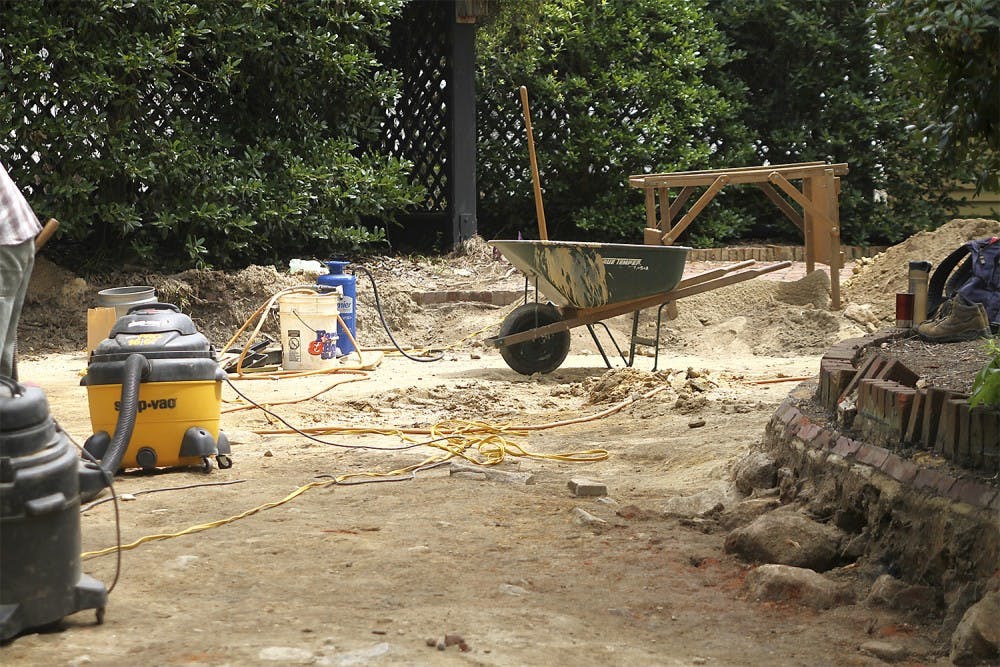The Second President’s House was built in 1812 and destroyed by a fire in 1886.
When workers tore out the blacktop driveway and University Arborist Tom Bythell saw artifacts like broken china underneath, he contacted university archaeologists on Aug. 18.
Bythell said he knew the foundations of the old house were in the vicinity of the current President’s House, but he didn’t expect the driveway work to go deep enough to uncover anything.
“Those guys stopped in and thought it was interesting, but then when they dug down deeper (on Aug. 19), I saw that it was the foundation there, so I went back and talked to Brett (Riggs, research archaeologist at the UNC Research Laboratories of Archaeology) and said, ‘Hey, there’s a foundation there,’” he said.
The Second President’s House was occupied by the first and second presidents of the University, Joseph Caldwell and David Swain, until Swain died in 1868, Riggs said.
Three U.S. Presidents visited the house — James K. Polk, James Buchanan and Andrew Johnson — and a Civil War romantic scandal may have originated there, according to records from the Research Laboratories of Archaeology.
“Supposedly, it’s where President Swain’s daughter met and fell in love with General Atkins of the Union Army when the Union Army came and occupied Chapel Hill — it was a huge scandal; she turned around and married this Union general. Apparently all that courtship happened in this very house,” said Mary Beth Fitts, an archaeology graduate student.
Ross’s driveway stood a few feet above the top of his predecessors’ formal dining room, which was in the basement of the Second President’s House.



